JAPANESE CALENDAR
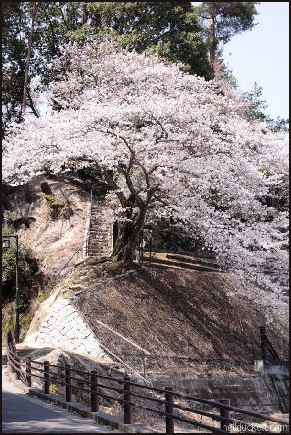
Cherry blossum season On the summer solstice the sun rises just before 4:30am in Tokyo and reaches a zenith of 78 degrees above the southern horizon at 11:40am and sets around 7:00am.
Japanese have traditionally marked the winter solstice” the shortest day of the year” by taking a long bath in a tub filled with hot water and an aromatic citrus fruit called yuzu. Yuzu is native to China, but has long been cultivated here as a tart, zesty flavoring for vinegar, ponzu sauce and broths. The peels are also mashed with honey and mixed into hot water to make the delicious and bone-warming yuzu-cha drink. A bath with yuzu fruits or its fragrant oils is said to warm the body to the core, calm and relax the spirit, and prevent colds.” [Source: Kevin Short, Daily Yomiuri, December 23, 2010]
Early autumn, during the harvest season, had traditionally been the time of moon-viewing parties.According to the lunar calendar, the full moon appearing around the middle of the ninth month was called the mid-autumn moon (“chushu no meigetsu”), and it became a custom to arrange moon-viewing parties to appreciate its particular beauty. This was originally a custom practiced in China, which spread to Japan in the Heian period (794--1185). Houses were decorated with eulalia grass (“susuki”) and dumplings were made and offered to the moon together with samples of crops from the autumn harvest. Autumn “Tsukimi “During the annual “tsukimi “(moon viewing) observance, people make offerings of dumplings (“dango”) and “susuki “grass as they enjoy the full moon.
Links in this Website: JAPANESE CALENDAR AND DAYLIGHT SAVINGS TIME Factsanddetails.com/Japan ; HOLIDAYS IN JAPAN Factsanddetails.com/Japan ; NEW YEAR'S IN JAPAN Factsanddetails.com/Japan ; FESTIVALS IN JAPAN Factsanddetails.com/Japan ; FUNERALS IN JAPAN Factsanddetails.com/Japan
Good Websites and Sources: Wikipedia article on Japanese Calendar Wikipedia ;Name Translations for the Japanese Calendar japanlinked.com ; Calendar History National Diet Library ; Lunar Calendar in Japan www2.gol.com/users/stever
Chinese Calendar, Zodiac and Astrology PaulNoll.com ; Mathematics of Chinese Calendar math.nus.edu ; Wikipedia article on Chinese Calendar Wikipedia Chinese Astrology 12 Zodiac 12zodiac.com ; Chinatown Connection on Astrology Chinatown Connection ; Chinatown Connection on the China Zodiac Chinatown Connection : Wikipedia article on Chinese Astrology Wikipedia
Seasons in Japan
The seasons are very important to Japanese. Japan has four distinct seasons and there are certain events, specific activities and foods associated with each one. The changing seasons is a theme addressed in “The Tale of Genji”, a 10th century novel. In the “Kokin Wakashu”, an anthology of waka poems compiled in the 10th century, the poems are arranged in the order of the seasons. Even today Japanese often begin polite correspondence with some comment on the seasons.
“Kisetsukan” (“the feel of the season”) is an important concept in Japanese cultural and artistic traditions. Haiku puts a strong emphasis on the season. Every poem must contain an appropriate “kigo” (“season word”). There is even a book that lists all recognized kigo by season.
The seasons and foods are often linked together. May is associated with the new rice crop and October is associated with the rice harvest. The “katsuo” bonito season is in early summer. “Koromogae” describes the season change of clothes in which, for example, one refrains from wearing linen until after the summer rainy season has ended.
Autumn leaves have been changing later in recent years as a result of higher summer and autumn temperatures.
Calendars in Japan
The traditional Japanese solar calendar marks years as years in the dynasty of an emperor. The year 2009, for example, is also known as Heisei 21, the 21st year of the reign of Emperor Akihito (who is also known as Emperor Heisei). Train tickets, store receipts and expiration dates for products are still marked in Heisei years.
Japan didn't adopt the Gregorian calendar until January 1, 1873, and since then it has been used side by side with the traditional lunar calendar. According to the lunar calendar in use before 1873, the numbering of the months was about one and a half months behind that of the modern solar calendar. Even though the Japanese celebrate New Years Day according to the Western solar calendar rather than the Chinese lunar calendar they still recognize Chinese astrological years such as the Year of the Rabbit and the Year of the Dragon.
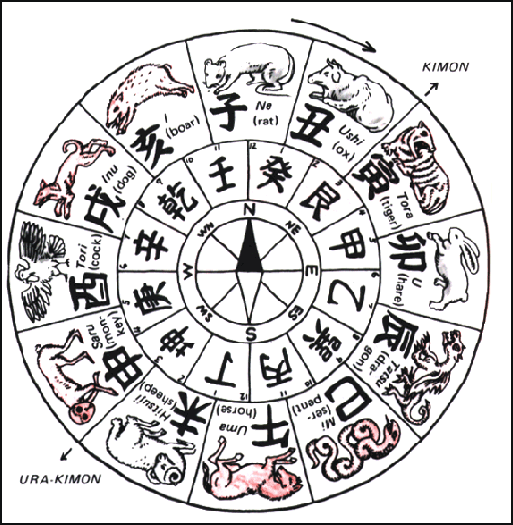
Traditional Chinese Calendar
The Chinese calendar was introduced to Japan in the 7th or 8th century. It is divided into 12 lunar months of 29 or 30 days (an astronomical lunar month is 29 days, 12 hours, 44 minutes and 5 seconds). The lunar months begin at the new moon. The full moon ideally falls on the 15th day of the month but often doesn’t. A year of 12 lunar months is 354 days long. So the seasons don't get out of wack, an extra month is inserted every three years or so according to strict rules.
The traditional Asian system utilizes a clever rule that states the winter solstice must always be in the 11th month. In 2009, for example, the solstice fell on the seventh day of the 11th lunar month. In 2010 it fell on the 17th, and in 2011, on the 28th. At this pace, the 2012 solstice would not arrive until well into the 12th lunar month. To prevent this, an intercalary month will be added in 2012, resetting the date of the solstice back to the 10th day of the 11th lunar month. [Source: Kevin Short, the Daily Yomiuri]
The years themselves are organized into 60-year calendar cycles: five times the 12-year Chinese zodiac cycle. The current 60-year cycle extends from 1996 to 2055. The last one lasted from 1936 to 1995.
The traditional Chinese calendar is comprised with the five basic elements (water, fire, metal, earth and wood) so that you can gave have a year of the metal rooster or fire pig that run on a 6 year cycle. The year 2004 was the year the of the wood money, the previous wood-monkey year was sin 1944 the next one is in 2064.
Chinese Astrology
The Chinese Zodiac , which is used Japan, is based on years rather months. Each year in a 12-year cycle is named after a different animal, with distinct characteristics associated with that animal. Many Chinese believe that the year of a person's birth is the primary factor in determining a person's personality traits, mental and physical attributes and success in love and life.
The 12 Asian zodiac animals are combined with the five basic phases (gogyo) to form a cycle of 60. Also, yin and yang (in and to in Japanese) years alternate with one another, and each of the five phases has both a yin and a yang form. Hare years are always yin, representing the female, soft and cool principles of the universe. [Source: Kevin Short, the Daily Yomiuri]
This basic Asian cosmology was developed in ancient China and brought to Japan with other elements of continental culture. Illustrations of the 12 zodiac animals decorate the walls of the burial chamber in the Kitora Tomb at Nara, thought to date to the late seventh century. The animals are arranged around the walls in directional positions, with the hare standing due east. The early Japanese would have readily recognized most of the zodiac animals. Only the dragon and tiger might have seemed a bit strange. The zodiac hare, of course, could immediately be associated with a familiar countryside animal, the nihon-nousagi or Japanese hare.
A 10-year cycle that runs concurrently with 12-year cycle defines whether years in the 12-year cycle are auspicious or inauspicious ones. The year 1966 — the Year of the Fiery Horse — was regarded as a bad year for girls and was marked by a significant reduction in births." It was said girls born that years suffer from a “dire fate” and would be "un-marriageable man eaters." The year 2007 — the Year of the Gold Pig — was regarded as a good year to have children because there was a good chance they would be rich. The next Fiery Horse year is 2026.
Birth rates in Asia go up in years of the dragon, considered an auspicious sign, and decline in years of the tiger, considers a sign that produces difficult children.
Book: Astrology: A History by Peter Whitfield (Abrams, 2001).
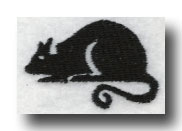
Chinese Zodiac Year Animals
Rats (born in 1936, 1948, 60, 72, 84, 96) are linked with prosperity and dynamism. They are regarded as charming, generous, ambitious, honest, and like to spend money but also can be quick tempered and have difficulty forming long term friendships. They are most compatible with dragons and monkeys, and least compatible with horses. Rats make good writers, salespersons and publicists. Famous rats include Shakespeare, Mozart and Churchill. [Source: Chinese restaurant menus]
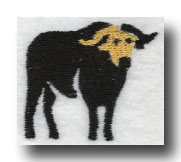 Oxen or Buffalo (1937, 1949, 61, 73, 85, 97) are considered hardworking and reliable like oxen and make good leaders. They are bright, patient, happy with themselves and have the ability to inspire others but have a reputation for being demanding and conservative. They are most compatible with snakes and roosters, and least compatible with sheep. Oxen make good surgeons, managers and generals. Famous oxen include Napoleon, Van Gogh and Richard Nixon.
Oxen or Buffalo (1937, 1949, 61, 73, 85, 97) are considered hardworking and reliable like oxen and make good leaders. They are bright, patient, happy with themselves and have the ability to inspire others but have a reputation for being demanding and conservative. They are most compatible with snakes and roosters, and least compatible with sheep. Oxen make good surgeons, managers and generals. Famous oxen include Napoleon, Van Gogh and Richard Nixon.
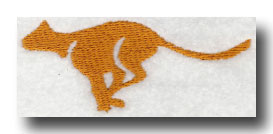 Tigers (1938, 1950, 62, 74, 86, 98) are used as a shield against evil and are thought of as aggressive, courageous, emotional, passionate, hotheaded, candid, sensitive, rebellious and foolish. They are most compatible with horses and dogs, and least compatible with monkeys. Tigers make good bosses, race car drivers and explorers. Famous tigers include Marco Polo, Mary Queen of Scots and Marilyn Monroe.
Tigers (1938, 1950, 62, 74, 86, 98) are used as a shield against evil and are thought of as aggressive, courageous, emotional, passionate, hotheaded, candid, sensitive, rebellious and foolish. They are most compatible with horses and dogs, and least compatible with monkeys. Tigers make good bosses, race car drivers and explorers. Famous tigers include Marco Polo, Mary Queen of Scots and Marilyn Monroe.
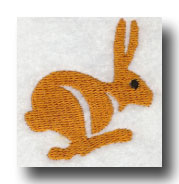 Rabbits (1939, 1951, 63, 75, 87, 99) are the luckiest of all signs. Rabbits are regarded as talented, articulate, affectionate yet shy, and peace seekers. Sometimes others thinks of them as superficial, conservative and overly sentimental. They are most compatible with sheep and pigs and least compatible with roosters. Rabbits make good lawyers and diplomats. Famous rabbits include Confucius, Albert Einstein and Orson Welles.
Rabbits (1939, 1951, 63, 75, 87, 99) are the luckiest of all signs. Rabbits are regarded as talented, articulate, affectionate yet shy, and peace seekers. Sometimes others thinks of them as superficial, conservative and overly sentimental. They are most compatible with sheep and pigs and least compatible with roosters. Rabbits make good lawyers and diplomats. Famous rabbits include Confucius, Albert Einstein and Orson Welles.
More Chinese Zodiac Animals
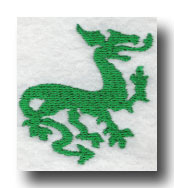 Dragons (1940, 1952, 64, 76, 88, 2000) are considered eccentric, extroverted, complex, intelligent, passionate and healthy and have been described as adventurous dreamers with strong leadership qualities. Sometimes they are seen as foolish, indiscreet and demanding. They are most compatible with rats and monkeys, and least compatible with dogs. Dragons make good artists and politicians. Famous dragons include Joan of Arc and Freud.
Dragons (1940, 1952, 64, 76, 88, 2000) are considered eccentric, extroverted, complex, intelligent, passionate and healthy and have been described as adventurous dreamers with strong leadership qualities. Sometimes they are seen as foolish, indiscreet and demanding. They are most compatible with rats and monkeys, and least compatible with dogs. Dragons make good artists and politicians. Famous dragons include Joan of Arc and Freud.
 Snakes (1941, 1953, 65, 77, 89, 2001) are thought of as wise, intense, vain, romantic, short tempered and beautiful or handsome. They have a good sense of humor but can be tight with their money and procrastinate on important decisions. They are most compatible with roosters and oxen, and least compatible with pigs. Snakes make good teachers, psychiatrists and fortunetellers. Famous snakes include Darwin, Lincoln and Edgar Allen Poe.
Snakes (1941, 1953, 65, 77, 89, 2001) are thought of as wise, intense, vain, romantic, short tempered and beautiful or handsome. They have a good sense of humor but can be tight with their money and procrastinate on important decisions. They are most compatible with roosters and oxen, and least compatible with pigs. Snakes make good teachers, psychiatrists and fortunetellers. Famous snakes include Darwin, Lincoln and Edgar Allen Poe.
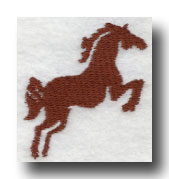 Horses (1942, 1954, 66, 78, 90, 2002) are considered an unlucky sign. They are popular, intelligent, attractive and have a large capacity for hard work but are also often impatient, egotistical and ostentatious. They are most compatible with tigers and dogs, and least compatible with rats. Horses make good scientist, poets and politicians. Famous horses include Rembrandt, Chopin and Teddy Roosevelt.
Horses (1942, 1954, 66, 78, 90, 2002) are considered an unlucky sign. They are popular, intelligent, attractive and have a large capacity for hard work but are also often impatient, egotistical and ostentatious. They are most compatible with tigers and dogs, and least compatible with rats. Horses make good scientist, poets and politicians. Famous horses include Rembrandt, Chopin and Teddy Roosevelt.
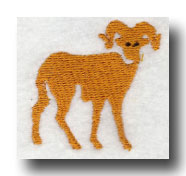 Sheep and Goats (1943, 1955, 67, 79, 91, 2003) are regarded as elegant, creative, timid and prefer anonymity. They often don’t give a good first impression but become more likable once you get to know them better. They have a tendency to be pessimistic and worry a lot and are most compatible with pigs and rabbits, and least compatible with oxen. Sheep make good actors and gardeners. Famous sheep include Michelangelo, Mark Twain and Rudolph Valentino.
Sheep and Goats (1943, 1955, 67, 79, 91, 2003) are regarded as elegant, creative, timid and prefer anonymity. They often don’t give a good first impression but become more likable once you get to know them better. They have a tendency to be pessimistic and worry a lot and are most compatible with pigs and rabbits, and least compatible with oxen. Sheep make good actors and gardeners. Famous sheep include Michelangelo, Mark Twain and Rudolph Valentino.
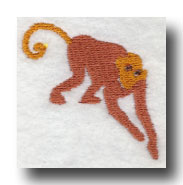
Yet More Chinese Zodiac Animals
Monkeys (1944, 1956, 68, 80, 92, 2004) are intelligent, enthusiastic and goal-oriented but are easily discouraged and confused. They have the ability to easily influence other people but are sometimes distrusted by other people and viewed as opportunists. They are most compatible with dragons and rats, and least compatible with tigers. Monkeys are usually successful at any endeavor they undertake. Famous monkeys include Julius Caesar, Leonardo da Vinci and Elizabeth Taylor.
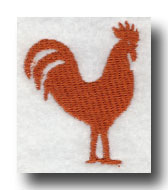
Roosters (1945, 1957, 69, 81, 93, 2005) are devoted to their work, creative, shrewd, selfish, eccentric and seekers of knowledge. Sometimes regarded as dreamers, they can be boastful, extravagant and are known for speaking their mind. They are most compatible with snakes and oxen, and least compatible with rabbits. They make good soldiers, travelers and restaurant owners. Famous roosters include Rudyard Kipling, Caruso and Groucho Marx
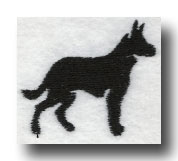 Dogs (1946, 1958, 70, 82, 94, 2006) are regarded as loyal. honest, stubborn, idealistic, supportive and sometimes selfish. They have a tendency to find fault with others and worry a lot and tend to be good listeners, insecure pessimists and find others take advantage of their loyalty. They are most compatible with horses and tigers, and least compatible with dragons. Dogs make good businessmen, teachers and spies. Famous dogs include Socrates, Benjamin Franklin and George Gershwin.
Dogs (1946, 1958, 70, 82, 94, 2006) are regarded as loyal. honest, stubborn, idealistic, supportive and sometimes selfish. They have a tendency to find fault with others and worry a lot and tend to be good listeners, insecure pessimists and find others take advantage of their loyalty. They are most compatible with horses and tigers, and least compatible with dragons. Dogs make good businessmen, teachers and spies. Famous dogs include Socrates, Benjamin Franklin and George Gershwin.
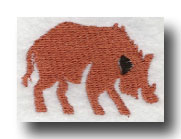 Pigs (1947, 1959, 71, 83, 95, 2007) are considered one of the unluckiest signs. They are regarded as spirited, noble, chivalrous, fun to be with, likes challenges, intellectual. sincere, tolerant, spontaneous, living for the moment and not likely to "look to far beyond tomorrow." They establish long term friendships but are sometimes naive and often have marriage problems . They are most compatible with rabbits and sheep, and least compatible with other pigs. Pigs make good lawyers and entertainers. Famous pigs include Albert Schweitzer and Ernest Hemingway.
Pigs (1947, 1959, 71, 83, 95, 2007) are considered one of the unluckiest signs. They are regarded as spirited, noble, chivalrous, fun to be with, likes challenges, intellectual. sincere, tolerant, spontaneous, living for the moment and not likely to "look to far beyond tomorrow." They establish long term friendships but are sometimes naive and often have marriage problems . They are most compatible with rabbits and sheep, and least compatible with other pigs. Pigs make good lawyers and entertainers. Famous pigs include Albert Schweitzer and Ernest Hemingway.
Pigs are associated with abundance and years of the pig are regarded as years of plenty, The Year of the Gold Pig on the 60-year cycle (next in 2031) is especially good. Lots of children are born on that year and sales of gold pig charms are brisk.
Traditional Calendars and Auspicious Days in Japan
Until the 1870s, Japan used a lunar calendar with a six-day cycle that specified, often in excruciating detail, what days and even hours were lucky or unlucky. The calendars were based on Chinese calendars brought to Japan in the 14th century. Although the traditional lunar calendar was outlawed during the Meiji period it continues to be used to determine auspicious and inauspicious days.
Many Japanese consult the lunar calendar for “taian”, lucky days, before making decisions on when to go on business trips, conduct important meeting or engage in other important activities. According to one study 3.3 percent of Japanese patients stay in the hospital longer than they have to so they can be discharged on an auspicious day.
Sundays in November are hugely popular days for getting married. The third Sunday of November (Good-Luck Sunday) is often considered particularly auspicious. The Sundays preceding “butsumetsu” (bad luck days) are regarded as unlucky and many hotels and wedding halls offer 30 percent discounts for wedding ceremonies held on these days but even then there are few takers. The New Otani Hotel in Tokyo, for example, had 27 weddings on Good-Luck Sunday one year and only three on Bad-Luck Sunday.
There are also lucky and unlucky years. One year in the mid-1960s featured a marked reduction in births because it was regarded as a year for girls "whose fate would be dire" and who would be "un marriageable." Lucky and unlucky years are usually determined by the Chinese calendar.

Chinese calendar
Traditional Japanese Lunar Calendar
The Japanese also have a lunar calendar (koyomi) with lunar months that average 29.5 days. This calendar is kept in sync with the solar calendar by adding seven additional months every 19 years. The winter solstice must always fall on the 11th lunar month. Whenever it threatens to fall in the 12th month an extra month is added. Kevin Short wrote in the Daily Yomiuri, “The traditional Japanese were keen observers of the natural world. Their lunar-solar calendars enabled them to reliably associate the months with various natural phenomenon such as the blooming of flowers and ripening of fruits. For example, I know that the period between the two great harvest moons is a great time to look for strawberry dogwood fruits.” [Source: Kevin Short, Daily Yomiuri]
The traditional Japanese almanac calendar divides the year into 24 sekkis, seasonal markers or segments, based on the solar meridian determined by the angle of the sun. The almanac has many connections with agriculture and the seasons, which tend to start about one and half months to two months earlier than those of Western solar calender. The sekkis are about 15 days each. These segments are closely related to seasonal changes in weather and the natural world. Mid July is in the segment known as Shosho, or "Small Heat," that comes at the tail end of the baiu early summer rainy season. The next segment, the Taisho, or "Big Heat," will start this coming, and usually closely coincides with the end of the baiu and start of high summer. Following the Big Heat will be the Risshu, or "Start of Autumn," beginning on Aug. 7. [Ibid}
Each sekki is further divided into three sub-segments, called ko. There are 72 of these in a year and they mark subtle changes in the seasons as reflected in the natural world. The three ko the koku, or “grain rains sekki — which occur in the late Japanese spring in April — are “reeds start growing,” “frost ends, seedling spurt” and “peonies flower.” Those for rikka in early Japanese summer in late April and May are “frogs sing,” “earthworms emerge, and “bamboo sprouts emerge.” The systems for dividing the solar year were originally developed in China. For the 72 ko, the Japanese retained the solar schedule but substituted their own natural event, which are in synch with those in lowland areas of central Honshu but are increasing out of synch as one travels north and south. And ti higher altitudes. [Ibid}
Kevin Short wrote in the Daily Yomiuri,Another feature of the traditional koyomi (calendar), totally independent of the lunar months and Sekki, is a repeating cycle of 60 days called the Eto. This counting system is based on ancient Taoist principles, and is used for years as well as days. The cycle of 60 is produced by combining the five basic elements or movements (Gogyo) of wood, fire, earth, metal and water; with the 12 animals (Junishi) of rat, ox, tiger, hare, dragon, snake, horse, sheep, monkey, rooster, dog and boar. Today, for example, is a Kanoto-mi, or metal-snake day. A widespread custom based on the traditional koyomi is to eat grilled eel (unagi) on the ox days that fall within the summer Doyo. Eel is high in protein and is considered an ideal meal for powering up during the hot, humid days of the Taisho. This year the summer Doyo ox day will fall on July 27. [Source: Kevin Short, Daily Yomiuri, July 20, 2012]
Totally separate from the Eto is the Rokusetsu, another repeating cycle, this one of only six days. This cycle is reset on the first day of each lunar month, and is used much like astrological horoscopes in the western world. Each of the six days is considered to be either lucky or unlucky for certain types of endeavors. Taian days, for example, are the most auspicious of all, and Butsumetsu the most inauspicious. Weddings are almost universally set for Taian days. Today is a Sekko day, considered to be generally unlucky, except for the time period from 11 a.m. to 1 p.m., which is very auspicious. If you have some special plan or endeavor in mind, lunch-time today might be an excellent chance to set it in motion.
Features of the Traditional Japanese Lunar Calendar
Each of the four main seasons’spring, summer, autumn and winter — are divided into six sections of about 15 days. The Japanese seasons tend to begin about a month and half before the seasons we use today, The traditional beginning of spring and the beginning of the year is in early February and the traditional beginning of winter is in early November. The start of summer is at the end of April. The spring equinox begins in the middle of spring rather than marking the beginning of it. The third division of spring begins on “keichitsu “ (“the day when the insects emerge from hibernation underground”) and ends on the spring equinox.
The unique Japanese system of “zassetsu” (“miscellaneous season”) marks certain critical periods or changes in the weather. Typical zassetsu are the four setsusun, the days before the official start of spring, summer, autumn and winter. The higan, two seven-day periods surrounding the spring and autumn equinoxes, are especially good time to clean and visit grave sites and to pray for the souls of ancestors. During the higan the sun sets in the due west, the direction of the Amida Buddha’s Great Western Paradise.
Each season on the zassetsu system is preceded by a period about 18 days long called a doyo. Doyo are considered to be periods of danger and instability, when the weather or other environmental conditions can change rapidly. They are regarded as good time to make changes in one’s life. The one before summer (“nyubai”) marks the beginning of the rainy season. The one before autumn (“nihyaku-toka”) is regarded a time when farmers and fishermen should be on the alert for typhoons. Only a few zassetsu dates are still observed today. They include the spring setsubun, when people throws beans at omi demons and late summer doyo when people eati unagi (eel).
Kevin Short wrote in the Daily Yomiuri, “The Japanese koyomi also contains several other independent systems for forecasting daily fortunes and avoiding trouble, as well as a wealth of annual occasions and observances that are regional in character. In Tokyo, for example, the morning glory market was held at Iriya on July 6-8, and the hozuki (ground cherry) market at Asakusa on July 9. There is one minor component in the Japanese koyomi that we naturalists find especially stimulating. This is the Shichijuniko or 72 Seasons, a system that breaks each of the 24 Sekki into three parts, early, middle and late, and provides seasonal nature markers for each part. For example, some of the seasonal markers for the Shosho include the first appearance of lotus flowers, and hawk fledglings leaving the nest for the first time.” [Source: Kevin Short, Daily Yomiuri, July 20, 2012]
The 7th, 8th and 9th lunar months form the autumn season on the traditional Japanese calendar. The 15th night of the 8th month is celebrated as “Great Moon of Mid-Autumn,” a time to honor the Great Wheel and enjoy tsukumo moon-viewing parties in which participants drink sake, eat tsukimi-dango rice cakes and compose haiku poems.
Daylight's Savings Time in Japan
Japan is one of the last developed countries that has not adopted daylight savings time. In July the sun rises at 4:00am in Tokyo and sets around 7:15pm. Among the 30 members of Organization for Economic Cooperation and Development (OECD) only Iceland, Japan and South Korea have not adopted daylight savings time.
Daylight savings time was introduced in 1948 during the postwar U.S. occupation as a way to combat coal and power shortages but was dropped after three years because it was extremely unpopular: the extra daylight was used to extract more hours from workers rather than giving them more leisure time.
Many Japanese are reluctant to “spring forward” because they still associate it with longer working hours and resent the way the measure was shoved down their throats by American occupiers with out consulting the Japanese. One government survey found that 18.8 percent oppose the idea because "the rhythm of their lives would change” and 10.8 percent opposed it because they worried they would have less time to sleep.
One of the biggest obstacle to adopting daylight savings time is the habit of Japanese salarymen of working late. The conventional wisdom is that extra evening daylight will just encourage them to work even later and deprive them of sleep.
Among the complications with starting daylight savings time are adapting Japan’s complicated train schedule and traffic light system. The cost of adapting traffic lights alone is expected to be around $250 million.
Efforts to Introduce Daylight's Savings Time to Japan
The idea of reintroducing daylight savings time has been floated from time to time. Whether or not it should be adopted has been a hotly debated topic.
Bills to reintroduce daylight savings time to save energy inevitably get shelved or postponed. Blogs critical of daylights saving time call the measure fascist and say it will upset biological clocks and make people lose sleep. An increasing number of people, including labor unions and business leader support time change, saying it will stimulate the economy and create jobs, and many feel it is only a matter of time before daylight savings time is adopted.
In 2003 daylight savings time was introduced to Hokkaido on an experimental basis through the initiative of the Hokkaido Chamber of Commerce, and was supported by many banks and companies, and has been in effect there ever since. The response of people who have participated in experimental daylight savings time in Sapporo and other places has generally been favorable. People enjoyed the opportunities to play sports and go shopping and spend money in the late hours when it was still light.
One of the main problems with the Hokkaido experiment is that program is voluntary. Many people have changed their clocks but many others haven’t and the rest of Japan haven’t, making timekeeping and scheduling complex and problematical. In Sapporo some banks have adopted daylight savings time but public schools haven’t. At the city government offices only 900 of the 12,000 employees switched to new time, causing confusion and exasperation on the part of the public on when they world receive government services.
In 2007 a new plan was introduced “to study the early implementation of daylight savings time or a similar system of moving up working and business hours apart of a national movement.” The main point of the plan is to lessen energy consumption and reduce greenhouse gases by getting history to start working earlier in the morning when temperatures are cooler, thus reducing the need for air conditioning.
Image Sources: drawings, JNTO; cherry tree, Neil Duckett.
Text Sources: New York Times, Washington Post, Los Angeles Times, Daily Yomiuri, Times of London, Japan National Tourist Organization (JNTO), National Geographic, The New Yorker, Time, Newsweek, Reuters, AP, Lonely Planet Guides, Compton’s Encyclopedia and various books and other publications.
Last updated July 2012
